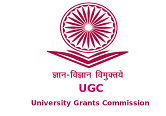Radiation stents – A road less travelled
DOI:
https://doi.org/10.55995/j-cpi.2019008Abstract
Radiotherapy has become one of the promising modalities in cancer treatment either as primary or in combination with other forms of therapy. But is also associated with a number of short and long term adverse effects such as pain, mucositis, erythema, ulceration, soft tissue necrosis, altered taste /olfaction, edema, radiation induced fibrosis, trismus, dysphagia, radiation caries, salivary gland dysfunction and Osteoradionecrosis. In almost every case, the adjacent normal tissue also gets irradiated because of its close proximity and worsens the scenario. Hence, their tissue tolerance exceeds, which leads to cell injury and a vicious cycle of adverse effects follows. Radiation stents can be a boon in sparing the adjacent tissues. This literature review summarizes the evidence which suggest actual reduction of adverse effects due to decline in levels of radiation in adjacent tissues.
Downloads
Published
How to Cite
Issue
Section
License
The entire contents of the Journal of Clinical Prosthodontics and Implantology are protected under Indian and international copyrights. The Journal, however, grants to all users a free, irrevocable, worldwide, perpetual right of access to, and a license to copy, use, distribute, perform and display the work publicly and to make and distribute derivative works in any digital medium for any reasonable non-commercial purpose, subject to proper attribution of authorship and ownership of the rights.






